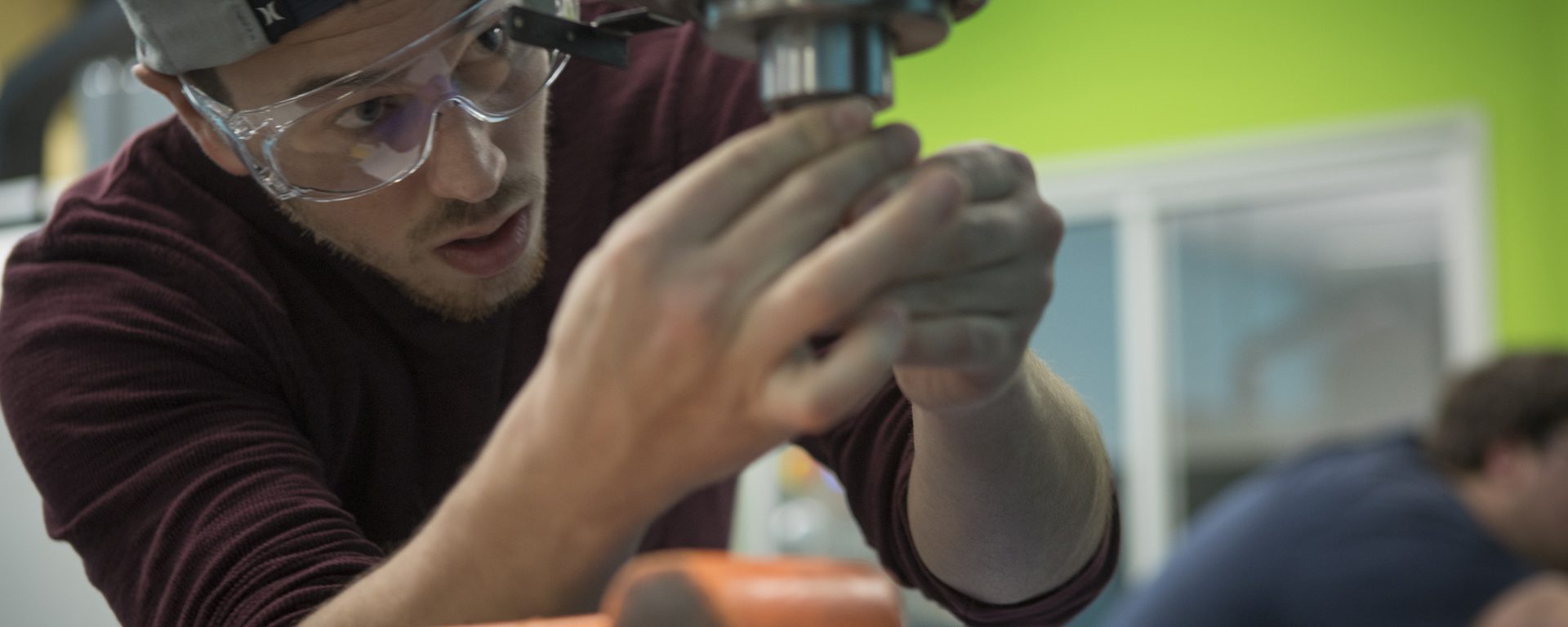CNC machinists are skilled workers whose work goes well-beyond the operating machine. They are the talented designers, mathematicians, and innovators of the manufacturing industry who are helping to build today’s most advanced products.
If you are a creative person who is looking for hands-on work, a career as a CNC machinist may be for you. With the right kind of training and education, you could be well on your way toward an exciting career, which could even involve building equipment for the most advanced aerospace companies in the country. Imagine that. The question is, where do you begin?
According to the Bureau of Labor Statistics, CNC machinists need at least a high school diploma to enter the field, followed by hands-on or on-the-job training. But in today’s competitive industry, the majority of aspiring machinists choose to pursue postsecondary CNC machining training to perfect their skills. Many manufacturing employers today are looking for workers who have acquired some structured, college-level classroom experience along with practical and applicable training. With an accredited manufacturing and machining school like Goodwin College, for example, you can become a desirable candidate for your dream job, in as little as two semesters! Whether you’re looking to earn a certificate or an associate degree in CNC machining, you will study metal work, technical drawings and blueprints, manufacturing mathematics, and computer-aided machining to hone your CNC skills.
A great manufacturing and machining school will cover a lot of material, but what are the can’t-miss CNC training courses? What are the various skills you will learn with a CNC machining program? Let’s explore 5 of the CNC classes that you won’t want to miss out on at Goodwin College.
Technical Drawings & Specifications
This course introduces the basic principles of engineering drawings. It covers line types, orthographic projection, and isometric views that are used in industry standards. With the help of this class, you will be acquainted with a pictorial vision of a 3D part in a flat-pattern view. Areas of study include:
- Line types
- Orthographic projection
- Isometric views
- Drawing standards
- Rules of dimensioning
- Holes and bolt hole patterns
- Drawings to scale
Once you’ve completed this class, you should be able to interpret basic prints and visualize the features of a part or system.
CAM I
With this course, you will learn the basics of Computer-Aided Manufacturing for CNC programming. You will review design and manufacturing software, and learn feature-based modeling systems called SolidWorks and Mastercam (both must-knows in the CNC industry). You will also learn to create simple 2D objects, such as lines and arcs, to create CAD solid models and add numerical dimensions and geometries.
CAM II
Here you will learn additional elements of Computer-Animated Manufacturing to manipulate engineering part geometry and convert screen graphics into CNC programs. You will learn the fundamentals of how to file and manage part models from design to manufacturing.
Technology in Advanced Manufacturing
This course will introduce you to the manufacturing processes by exploring the basics of production, the types of sources of raw materials, as well as production processes that include casting, molding, and forming. Students explore the types of machining, conditioning of parts, finishing and assembly. You’ll also focus on manufacturing planning, production control, and product distribution. There’s a focus on safety and quality for continuous improvement within this course, as well.
Principles in Manufacturing Mathematics
With this course, you’ll begin with a review of basic operations of numbers, fractions and decimals. Then you’ll move on to cover practical mathematics that every machinist is expected to use. These include:
- Common fraction to decimal conversions
- Inch to metric conversions
- Calculating part and feature dimensions and locations
- Calculating speeds and feeds
- Calculating tap drill sizes with formulas and charts
- Converting surface feet per minute to RPMs
- Calculating tapers for machine set-up
- Plane geometry calculations
- Sine bar set-up
- Measurements of right triangles
- Angular and simple indexing calculations
With the proper CNC training courses, you can master the skills needed to become a successful CNC Machinist. Call 800-889-3282 to learn more about the certificate-level and associate degree programs in CNC Machining at Goodwin College, or visit us online.
Goodwin University is a nonprofit institution of higher education and is accredited by the New England Commission of Higher Education (NECHE), formerly known as the New England Association of Schools and Colleges (NEASC). Goodwin University was founded in 1999, with the goal of serving a diverse student population with career-focused degree programs that lead to strong employment outcomes.

